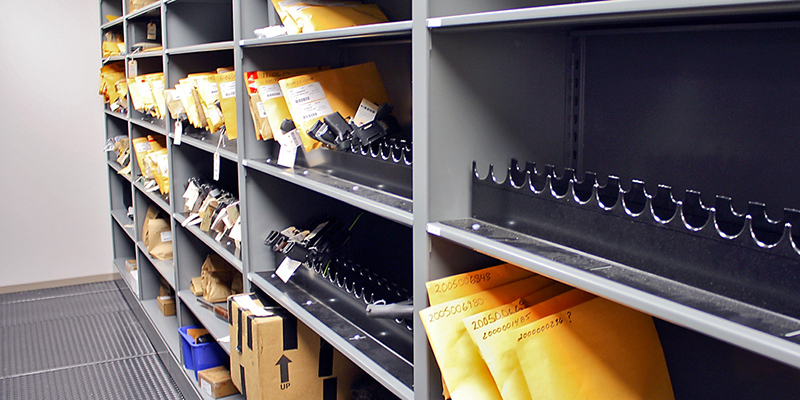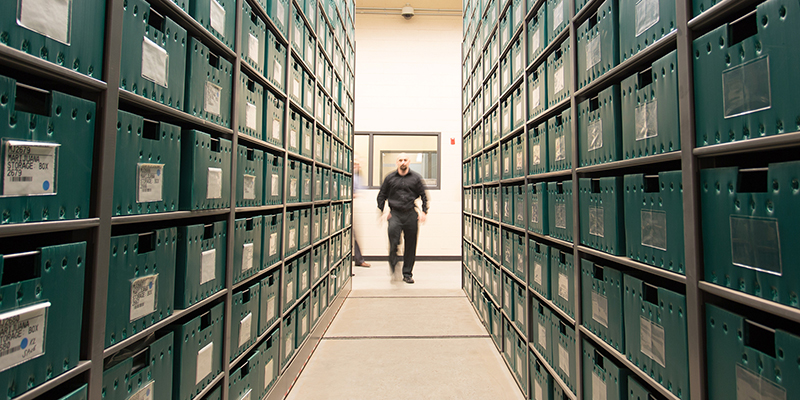There's an old saying: If you're going to do something, do it right. That's especially true when it comes to evidence rooms, where sloppy storage can sink a case. Evidence rooms require more than order and efficiency. One misplaced item, one broken chain of custody, and the consequences can ripple far beyond the property room.
We've seen how DNA, weapons, and even something as random as a shoelace can make or break a case. And while most collected evidence never sees a courtroom, there's no telling which item will turn out to be critical. That's why every public safety agency, no matter the size, needs an evidence storage setup that's organized, secure, and fully compliant.
1. Personnel Selection
If you're checking boxes on evidence room requirements, start with the people. It doesn't matter how secure your lockers are if the wrong folks have the keys.
The job of managing evidence isn't glamorous. It's not what you see on CSI. It's paperwork, chain of custody, surprise audits, and making sure that key pieces of evidence (even that one shoelace from the robbery in 2007) are still right where they should be. That's not something you hand off lightly.

Sworn officers, civilian staff, or a mix of both — it all works, as long as your people are trained, trustworthy, and actually want to be there. Background checks, drug screens, and maybe even a polygraph could all apply to your evidence room staff. If someone's managing evidence that could decide a person's future, you want to know they're solid.
Bottom line: People are the first layer of security in any evidence room. Pick the right ones, and train them like the conviction depends on it. Because it kind of does.
2. Departmental Procedures and Steps
Most evidence rooms weren't built with elbow space in mind. You've got a mountain of stuff and barely a closet to keep it in. But tight quarters don't excuse chaos.

One of the core evidence room requirements is a playbook: clear, repeatable procedures that everyone can follow. Think of it as your standard operating procedure for staying sane. Whether you're tackling firearms or found property, evidence lockers with built-in barcode access or pass-thru capability make it easier to log, secure, and retrieve evidence without breaking protocol.
So spell it out. How should evidence be sealed? What gets stored where? Who's allowed to access what, and when? Whether it's found property or something heading to court, those steps need to be documented, shared, and actually followed.
Decide how your procedures and steps work. Write them down. Make sure your entire staff knows them front to back. Then stick to them like they're the chain of custody. In short: decide, declare, and disseminate.
3. Evidence Storage, Security, & Disposition
Once you've got your people and your procedures, it's time to tackle the heart of it all: where the evidence actually goes.
Evidence rooms require more than just putting evidence somewhere safe. Solutions like ventilated lockers for narcotics and mobile shelving for long-term storage help you stay compliant. But you still need to know:
- How items are checked in
- Where they're stored
- Who handles them
- What happens when they're no longer needed
Is there a process for moving items from the pass-thru to a locker? Are firearms and narcotics stored separately? Or should they be in the same (locked) room? What's your policy for long-term holds? Do you know when it's time to dispose of evidence, and does your staff carry out disposal in a timely manner?

These aren't just logistics — they're liabilities if ignored. Advances in DNA testing mean some evidence might be around for decades. And in a world where space is always tight, storage, security, and disposition all need to work in lockstep.
Get specific. Get consistent. Build a system you can walk through blindfolded (though maybe don't). Your future self and auditors will thank you.
4. Professional Standards and Work Environments
Some people obsess over organizing their golf clubs, model trains, or vintage lunchbox collections. But organization in the evidence room isn't about hobbies. It's about lives. The way you manage that space matters. A lot.
Nobody's saying you have to figure it all out yourself. National organizations like CALEA® and IAPE exist for a reason. These organizations help agencies align with evidence room requirements, stay compliant, and avoid making headlines for the wrong reasons.

Regular audits (yes, even the surprise kind) are a must. Without them, things can slip fast, like from a missing item to a full-blown scandal. And once public trust is gone, it's not easy to get it back.
So follow the standards. Create a clean, secure work environment. Treat your evidence like it belongs in a courtroom. Chances are, it will.
Doing It Right From Day One
Evidence room requirements are the backbone of accountability, compliance, and public trust. From staffing and SOPs to secure storage and audit-ready organization, every piece plays a part in getting it right.
But if getting it right feels overwhelming, that's where we come in.
At Patterson Pope, we've helped public safety professionals across the country design evidence storage systems that work, with well-designed layouts, secure equipment, and the support to back it all up.
Ready to tackle your own evidence room upgrade? Just have some questions? Contact a Patterson Pope rep today. We're here to help.


















